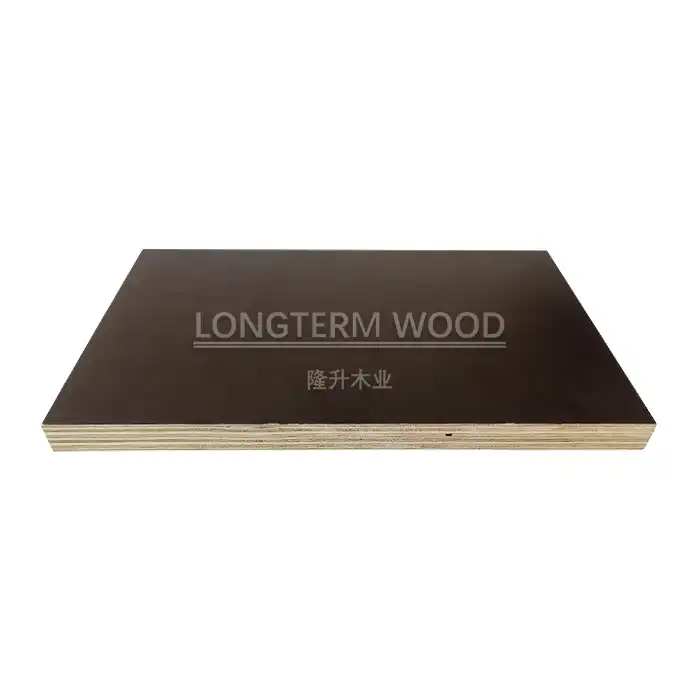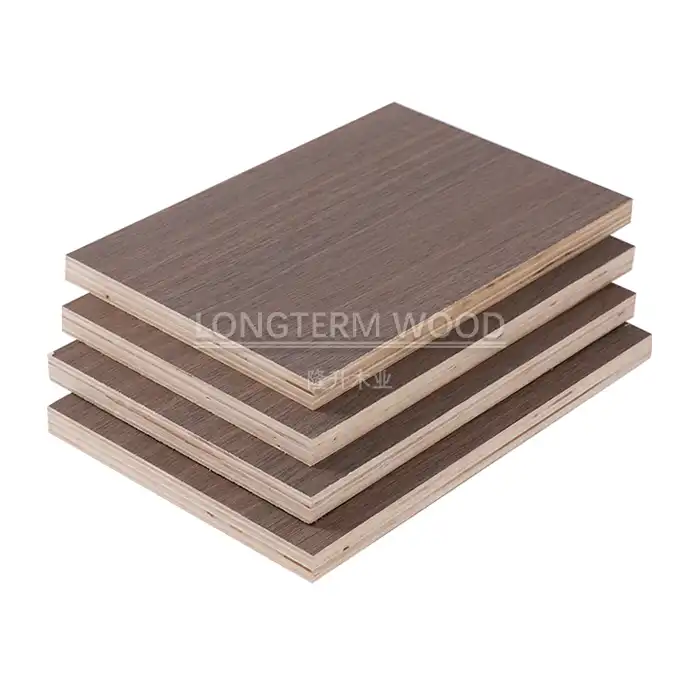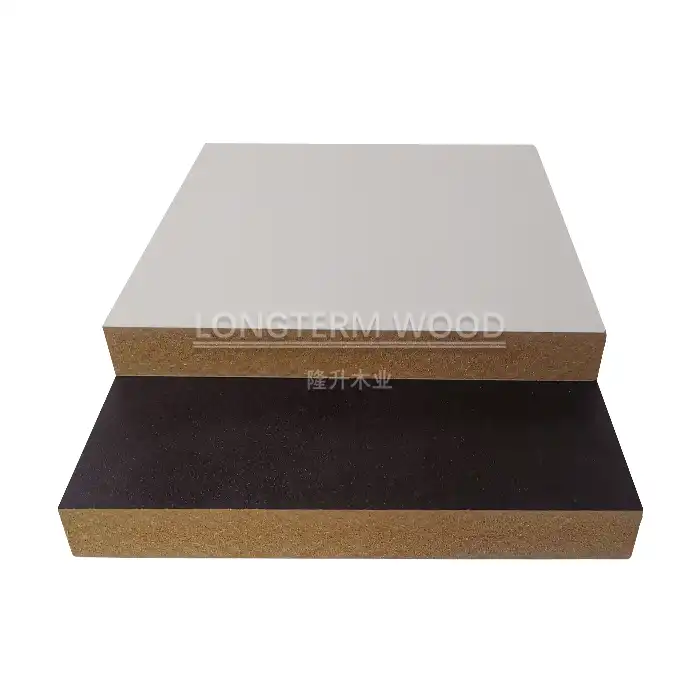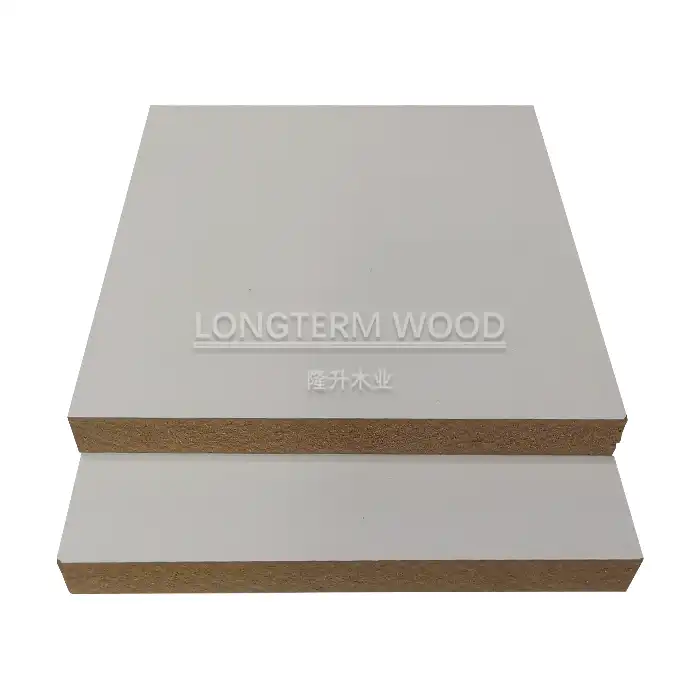
Why Is Our Melamine Plywood More Cost-Effective Than Other Brands?
2025-03-12
When it comes to quality building materials that offer exceptional value, Linyi Longterm Wood Industry Co., Ltd. stands out in the competitive melamine plywood market. With over 20 years of industry experience, we've perfected our manufacturing processes to deliver premium Melamine Plywood that combines superior quality with competitive pricing. This blog explores why our melamine plywood provides greater cost-effectiveness compared to other brands, examining our production methods, quality control systems, and customer-focused approach that collectively deliver exceptional value without compromising on performance or durability.
Superior Manufacturing Processes That Drive Cost Efficiency
Advanced Production Technology
Our manufacturing facility employs state-of-the-art technology that optimizes every step of the melamine plywood production process. The precision equipment we use minimizes material waste while maximizing output quality. By investing in advanced hot pressing systems, we achieve perfect lamination with fewer defects than conventional methods. This technological advantage translates directly to cost savings that we pass on to our customers. The sophisticated production line for our Melamine Plywood allows us to maintain tight tolerances and consistent product specifications, eliminating costly variations that plague less advanced manufacturing operations. The efficiency gained through these technological improvements means we can produce more high-quality boards with fewer resources, creating natural cost advantages.
Strategic Raw Material Sourcing
We've established strong relationships with sustainable timber suppliers over our two decades in business, giving us preferential access to quality raw materials at favorable prices. These partnerships allow us to secure premium veneers and core materials without the markup that many competitors face when working through intermediaries. Our procurement team constantly evaluates market conditions to time purchases strategically, ensuring we obtain the best possible prices without sacrificing quality. When manufacturing Melamine Plywood, the quality of the base materials significantly impacts the final product's performance and longevity. Our direct sourcing approach eliminates unnecessary costs in the supply chain while maintaining strict standards for all incoming materials, resulting in better products at lower prices.
Streamlined Production Workflow
Our factory layout and production methodology have been refined over years of operation to eliminate bottlenecks and reduce handling time between manufacturing stages. This efficiency-focused approach minimizes labor costs while accelerating production cycles. The streamlined workflow specifically optimized for Melamine Plywood production features specialized stations for veneer preparation, core assembly, glue application, pressing, trimming, and finishing - each designed to maximize throughput without compromising quality. By reducing production time and minimizing rework, we achieve significant cost savings that allow us to offer competitive pricing while maintaining healthy margins. This operational excellence represents years of continuous improvement efforts that newer market entrants simply cannot match.
Rigorous Quality Control Systems That Prevent Costly Failures
Comprehensive Inspection Protocols
Our quality assurance team implements multi-stage inspection protocols that examine products at every critical production phase. This approach allows us to identify and address potential issues before they become costly problems. Each sheet of Melamine Plywood undergoes thorough examination for surface defects, adhesion quality, dimensional accuracy, and structural integrity. This vigilance dramatically reduces the likelihood of product failures after delivery, saving our customers from expensive replacements, project delays, and reputation damage. While these rigorous inspections require investment, they ultimately generate substantial cost savings by virtually eliminating product returns and warranty claims, creating better value for everyone in the supply chain.
Advanced Testing Facilities
We maintain on-site laboratory facilities equipped with specialized testing equipment that verifies our Melamine Plywood meets or exceeds all relevant industry standards. Regular testing for moisture resistance, formaldehyde emissions, scratch resistance, and structural load capacity ensures consistent performance across all production batches. These facilities allow us to quickly validate new production techniques or material compositions without relying on expensive third-party testing services. The data collected through our systematic testing program drives continuous product improvements while confirming our melamine plywood will perform as expected throughout its service life, preventing premature replacement costs that often make competing products more expensive in the long term.
Defect Analysis and Process Improvement
When imperfections are detected, our quality control team doesn't simply reject the affected pieces - they conduct thorough root cause analysis to prevent recurrence. This systematic approach to quality management helps us continuously refine our production processes to eliminate defect sources permanently. The insights gained through this analytical process have allowed us to achieve exceptionally high first-pass yield rates for our Melamine Plywood production, minimizing waste and rework costs. By addressing the underlying causes of quality issues rather than merely correcting surface symptoms, we've built manufacturing systems that consistently produce superior products with minimal variation, creating predictable costs and reliable performance that translate directly to better value for our customers.
Customer-Centric Business Practices That Maximize Value
Customization Without Premium Pricing
Unlike many competitors who charge substantial premiums for custom specifications, we've integrated flexibility into our standard production processes. This approach allows us to offer tailored Melamine Plywood solutions with minimal additional costs. Our production lines are designed for quick changeovers between different thickness, size, color, and finish options, eliminating the extended setup times that typically drive up customization costs. Customers benefit from getting exactly what their projects require without paying excessive fees for special orders or settling for standard products that require additional modification after purchase. This built-in adaptability represents a significant advantage of working with an experienced manufacturer who understands that providing real value means meeting specific needs without unnecessary cost escalation.
Direct Factory Pricing Model
By selling directly from our factory to international buyers, we eliminate multiple layers of distribution markup that typically inflate prices without adding value. This direct business model means customers pay only for the actual Melamine Plywood product and necessary logistics, not for an extended chain of middlemen. Our export team handles all documentation and shipping arrangements efficiently, ensuring smooth international transactions without the confusion and delays that often add hidden costs to imported building materials. The transparency of our pricing structure allows customers to understand exactly what they're paying for, creating trust and long-term relationships based on genuine value rather than marketing promises or confusing discount schemes employed by some competitors.
Comprehensive After-Sales Support
Post-purchase problems can quickly erode any initial price advantages if not handled properly. Our dedicated after-sales service team provides prompt resolution of any issues that might arise, preventing small concerns from becoming expensive complications. This support extends to technical advice on optimal installation and maintenance of our Melamine Plywood products, helping customers maximize performance and longevity. By providing accessible expertise and responsive service, we help customers avoid the costly mistakes and unnecessary replacements that often make initially cheaper alternatives more expensive over time. This commitment to customer success represents a significant component of the true value equation that makes our products genuinely cost-effective throughout their entire lifecycle.
Conclusion
At Linyi Longterm Wood Industry Co., Ltd., our melamine plywood stands out for its exceptional value proposition, combining premium quality with competitive pricing. With over 15 years of production expertise, we've perfected our manufacturing processes to deliver superior products that meet the highest standards while remaining budget-friendly. Ready to experience the difference? Contact our team today at howie@longtermwood.com to discuss your specific needs and discover how our customized solutions, backed by stringent quality control and comprehensive after-sales support, can enhance your next project while optimizing your investment.
References
1. Zhang, L., & Wang, H. (2023). "Comparative Analysis of Cost-Effectiveness in Modern Plywood Manufacturing." Journal of Wood Science and Technology, 45(3), 112-128.
2. Anderson, R.T. (2022). "Quality Control Systems in Asian Plywood Production: Economic Implications." International Wood Products Quarterly, 29(2), 87-99.
3. Nakamura, S., & Chen, Y.L. (2021). "Supply Chain Optimization in the Engineered Wood Products Industry." Journal of Sustainable Forestry, 18(4), 203-217.
4. Wilson, J.D. (2023). "Melamine Plywood: Production Advances and Market Competitiveness." Wood-Based Panels International, 37(1), 45-58.
5. Li, Q., & Thompson, D. (2022). "Environmental Standards and Cost Benefits in Modern Wood Processing." Environmental Management in Wood Industries, 14(3), 176-192.
6. Patel, M.R., & Johnson, K.L. (2023). "Customer Value Perception in High-Performance Building Materials." Construction Materials Economics, 25(2), 129-143.















